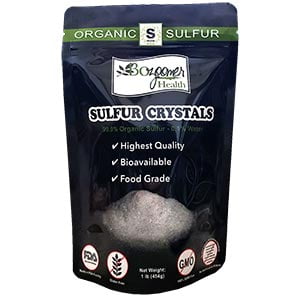
DON'T MISS THE SAVINGS!
GET $5 OFF Your 1st Order!
USE COUPON CODE: 5OFF1ST

DON'T MISS THE SAVINGS!
GET $5 OFF Your 1st Order!
USE COUPON CODE: 5OFF1ST
$9.95
Cognitive Vitamin C -1000 Complex is water soluble and not only a great antioxidant but also increases brain energy and triggers neurotransmitters. Has bioflavonoids, Hesperidan, and Quercetin which protect against free radicals and reduce the damage associated with Parkinson’s and Alzheimer’s. The dose is 1,000 mg 3 times per day.
In stock
Add $25.00 more to get FREE SHIPPING!
Cognitive Vitamin C-1000 Complex is water-soluble and not only a great antioxidant but also increases brain energy and triggers neurotransmitters. Has bioflavonoids, Hesperidan, and Quercetin, which protect against free radicals and reduce the damage associated with Parkinson’s and Alzheimer’s. The dose is 1,000 mg 3 times per day.
Some information about taking our Vitamin C-1000 Complex
 Vitamin C is water-soluble, meaning it determines how it acts within the body and how the vitamin is absorbed.
Vitamin C is water-soluble, meaning it determines how it acts within the body and how the vitamin is absorbed.
We suggest you take 1 tablet about 30 minutes before a meal and do this twice per day. This gives you 2000 mg per day.
All B vitamins and vitamin C are water-soluble.
Remember that this vitamin C-1000 complex has other important nutrients and strong antioxidant properties to help fight off free radical damage.
Vitamin C, also known as L-ascorbic Acid, Ascorbic Acid, or L-ascorbate, is a vital nutrient for many animals, including humans. It is an Antioxidant that protects the body against Oxidative Stress. An antioxidant is a molecule that can inhibit the oxidation of other molecules. Oxidation reactions produce free radical,s which can start chain reactions that damage cells.
Simply stated, a Free Radical is an atom or molecule with an unpaired electron. When we take a breath, we inhale numerous chemicals from burnt jet fuel, air pollution from vehicles and factories, gases released from the carpet, processed food, and foods grown in chemically treated soils. Things like food colorings, shampoos, and deodorants, for example, add toxins to our systems and add more Free Radicals. Free Radicals – uncontrolled, will eventually cause major problems in our bodies as they multiply.
Antioxidants neutralize Free Radicals. They sacrifice themselves by giving the Free Radical the electron it needs to stop the chain reaction from continuing, thereby reducing oxidative stress. Oxidative stress occurs when the production of Free Radicals exceeds the protective capability of the antioxidant defenses.
Oxidative stress has now been shown beyond any shadow of a doubt through medical research to be the root cause of over 70 chronic diseases. Diseases like heart disease, cancer, stroke, diabetes, Alzheimer’s, arthritis, dementia, lupus, macular degeneration, MS, and the list goes on.
But because of our food chain as well as our environment, diet alone is not enough. Even if you eat a great diet, you can barely obtain the RDA (Recommended Daily Allowance) level of all essential nutrients. The optimal levels of nutrients known to provide health benefits are significantly greater than those suggested by the RDA, and only 1% of Americans regularly accomplish the RDA.
For example, the optimal level of vitamin C is approximately 2000 to 3000mg daily, while the RDA is only 60mg. To eat optimal levels of Vitamin C, you would need to eat 160 apples every day. With that being said, it becomes obvious that significant supplements of a variety of potent antioxidants are necessary each day to provide optimal cellular nutrition.
Vitamin C-1000 Complex and Organic Sulfur are the main components of connective tissue that produce collagen. Vitamin C also helps our body better absorb Organic Sulfur and may lower the risks of cataracts, offering cardiovascular benefits because it is an organic compound.
Vitamin C plays an important role in healing and fighting off infections.
Our Vitamin C-1000 Complex has Acerola, which is known for being extremely rich in vitamin C, although it also contains vitamins A, B1, B2, and B3, as well as carotenoids and bioflavonoids, which provide very important nutritive value.
It also has the amazing flavonoids Quercetin, Hesperidin and Rutin found mainly in citrus fruits.
In addition, Rose Hips are included in the fruit of the rose plant and are used for many herbal products.
This vitamin C produced by the fruit is better absorbed by human organisms than synthetic ascorbic acid.
Our Vitamin C-1000 Complex has to be in tablet form because a lot is going on inside of it. We could not put all of these nutrients into a small capsule.
Linus Pauling Institute
Linus Pauling Institute Linus Pauling was an American chemist, biochemist, peace activist, author, and educator. He published more than 1,200 papers and books, of which about 850 dealt with scientific topics. New Scientist called him one of the 20 greatest scientists of all time, and as of 2000, he was rated the 16th most important scientist in history. He is one of only four individuals to have won more than one Nobel Prize, as he was awarded two unshared Nobel Prizes. His discoveries led to decisive contributions in a diverse array of areas, including extensive work with Vitamin C.
He died at the age of 93.
The Bioavailability of Different Forms of Vitamin C (Ascorbic Acid)
The Bioavailability of Different Forms of Vitamin C (Ascorbic Acid) In the rapidly expanding market of dietary supplements, it is possible to find vitamin C in many different forms with many claims regarding its efficacy or bioavailability. Bioavailability refers to the degree to which a nutrient (or drug) becomes available to the target tissue after it has been administered.
Natural vs. synthetic ascorbic acid
We reviewed the literature for the results of scientific research on the bioavailability of different forms of vitamin C. Natural vs. synthetic ascorbic acid Natural and synthetic L-ascorbic acid are chemically identical, and there are no known differences in their biological activity.
The possibility that the bioavailability of L-ascorbic acid from natural sources might differ from that of synthetic ascorbic acid was investigated in at least two human studies, and no clinically significant differences were observed. A study of 12 males (6 smokers and 6 nonsmokers) found the bioavailability of synthetic ascorbic acid (powder administered in water) to be slightly superior to that of orange juice, based on blood levels of ascorbic acid, and not different based on ascorbic acid in leukocytes(white blood cells). A study of 68 male nonsmokers found that ascorbic acid consumed in cooked broccoli, orange juice, orange slices, and synthetic ascorbic acid tablets are equally bioavailable, as measured by plasma ascorbic acid levels.
Different forms of ascorbic acid
The gastrointestinal absorption of ascorbic acid occurs through an active transport process, as well as through passive diffusion. At low gastrointestinal concentrations of ascorbic acid active transport predominates, while at high gastrointestinal concentrations active transport becomes saturated, leaving only passive diffusion. In theory, slowing down the rate of stomach emptying (e.g., by taking ascorbic acid with food or taking a slow-release form of ascorbic acid) should increase its absorption. While the bioavailability of ascorbic acid appears equivalent whether it is in the form of powder, chewable tablets, or non-chewable tablets, the bioavailability of ascorbic acid from slow-release preparations is less certain.
A study of three men and one woman found 1 gram of ascorbic acid to be equally well absorbed from solution, tablets, and chewable tablets, but the absorption from a timed-release capsule was 50% lower. Absorption was assessed by measuring the urinary excretion of ascorbic acid after an intravenous dose of ascorbic acid and then comparing it to urinary excretion after the oral dosage forms. A more recent study examined the plasma levels of ascorbic acid in 59 male smokers supplemented for two months with either 500 mg/day of slow-release ascorbic acid, 500 mg/day of plain ascorbic acid, or a placebo. After two months of supplementation, no significant differences in plasma ascorbic acid levels between the slow-release and plain ascorbic acid groups were found.
A second placebo-controlled trial also evaluated plain ascorbic acid versus slow-release ascorbic acid in 48 male smokers. Participants were supplemented with either 250 mg plain ascorbic acid, 250 mg slow-release ascorbic acid, or placebo twice daily for four weeks. No differences were observed in the change in plasma ascorbate concentration or area under the curve following ingestion of either formulation.
Mineral ascorbates
Mineral salts of ascorbic acid (mineral ascorbates) are less acidic, and therefore, considered “buffered.” Thus, mineral ascorbates are often recommended to people who experience gastrointestinal problems (upset stomach or diarrhea) with plain ascorbic acid. There appears to be little scientific research to support or refute the claim that mineral ascorbates are less irritating to the gastrointestinal tract.
When mineral salts of ascorbic acid are taken, both the ascorbic acid and the mineral appear to be well absorbed, so it is important to consider the dose of the mineral accompanying the ascorbic acid when taking large doses of mineral ascorbates. For the following discussion, it should be noted that 1 gram (g)= 1,000 milligrams (mg) and 1 milligram (mg) = 1,000 micrograms (μg). Mineral ascorbates are available in the following forms: · Sodium ascorbate: 1,000 mg of sodium ascorbate generally contains 111 mg of sodium. Individuals following low sodium diets (e.g., for high blood pressure) are generally advised to keep their total dietary sodium intake to less than 2,500 mg/day.
Thus, mega-doses of vitamin C in the form of sodium ascorbate could significantly increase sodium intake. · Calcium ascorbate: Calcium ascorbate generally provides 90-110 mg of calcium (890-910 mg of ascorbic acid) per 1,000 mg of calcium ascorbate. Calcium in this form appears to be reasonably well absorbed. The recommended dietary calcium intake for adults is 1,000 to 1,200 mg/day. Total calcium intake should not exceed the UL, which is 2,500 mg/day for adults aged 19-50 years and 2,000 mg/day for adults older than 50 years.
Vitamin C with bioflavonoids
Bioflavonoids or flavonoids are polyphenolic compounds found in plants. Vitamin C-rich fruits and vegetables, especially citrus fruit, are often rich sources of flavonoids as well. The effect of bioflavonoids on the bioavailability of ascorbic acid has been recently reviewed. Results from the 10 clinical studies comparing the absorption of vitamin C alone or vitamin C in flavonoid-containing foods showed no appreciable differences in the bioavailability of ascorbic acid.
Only one study, which included five men and three women, found that a 500-mg supplement of synthetic ascorbic acid, given in a natural citrus extract containing bioflavonoids, proteins, and carbohydrates, was more slowly absorbed and 35% more bioavailable than synthetic ascorbic acid alone when based on plasma levels of ascorbic acid. The remaining studies showed either no change or slightly lower plasma ascorbate levels in subjects who consumed vitamin C with flavonoids compared to flavonoids alone.
Another assessment of vitamin C bioavailability is measuring urinary ascorbate levels to approximate rates of vitamin C excretion. One study in six young Japanese males (22-26 years old) showed a significant reduction in urinary excretion of ascorbic acid in the presence of acerola juice, a natural source of both vitamin C and flavonoids.
Ascorbate and vitamin C metabolites (Ester-C ®)
Ester-C ® contains mainly calcium ascorbate, but also contains small amounts of the vitamin C metabolites, dehydroascorbic acid (oxidized ascorbic acid), calcium threonate, and trace levels of xylonate and lyxonate. In their literature, the manufacturers state that the metabolites, especially threonate, increase the bioavailability of vitamin C in this product, and they indicate that they have performed a study in humans that demonstrates the increased bioavailability of vitamin C in Ester-C ®.
This study has not been published in a peer-reviewed journal. A published study of vitamin C bioavailability in eight women and one man found no difference between Ester-C ® and commercially available ascorbic acid tablets for the absorption and urinary excretion of vitamin C.
Only logged in customers who have purchased this product may leave a review.


Tellus gravida ipsum aut facilisis tempus at et aliquam estsem.
Non pulvinar aenean ultrices lectus vitae imperdiet vulputate a eu.
Aliquet ullamcorper leo mi vel sit pretium euismod eget libero.
Nullam iaculis vestibulum arcu id urnain pellentesque volutpat quis.

Subscribe and grab 20% OFF!

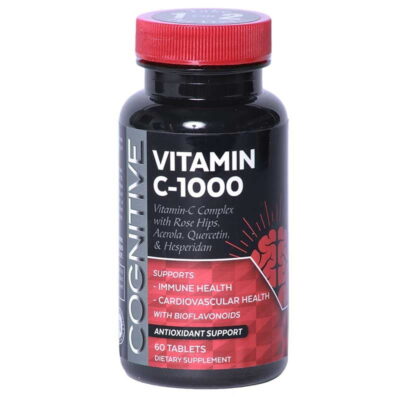
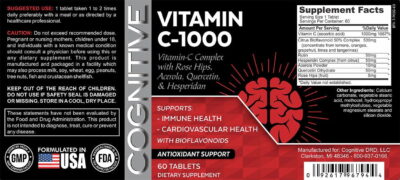
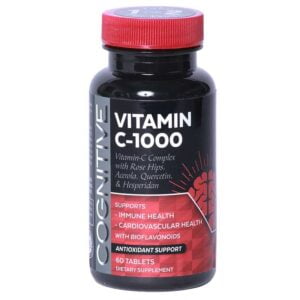
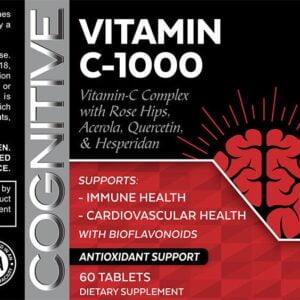
Reviews
There are no reviews yet.